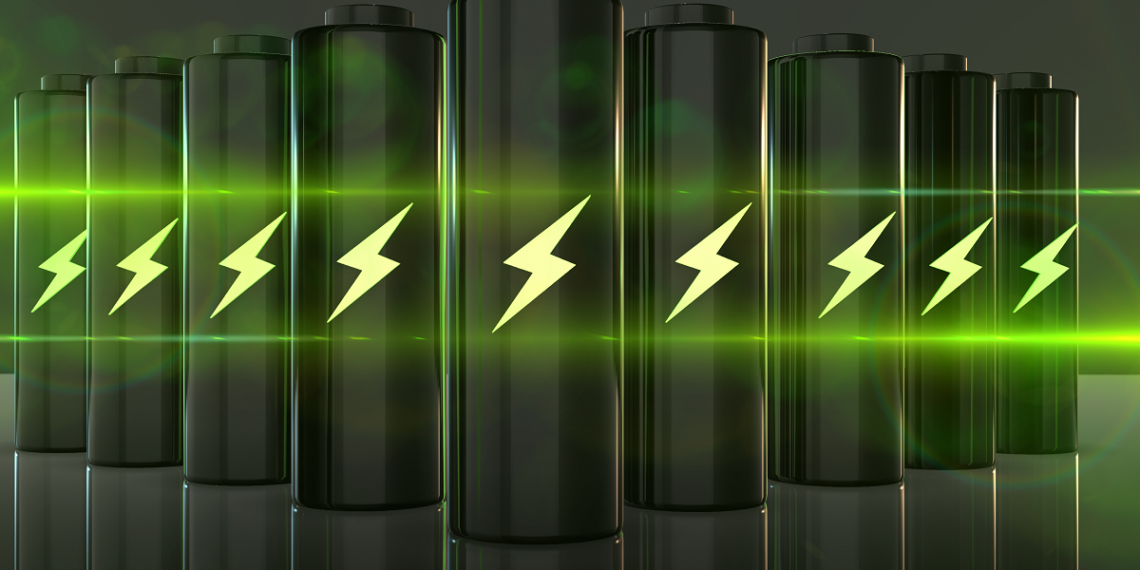Decarbonization today hinges heavily on the electrification of the automotive sector, and the incorporation of renewable-generated energy storage, both dependent on lithium-ion batteries (LIBs).
In recent years, there has been hearty investment into battery capacity, with a report from S&P Global predicting that global capacity should reach 6.5TWh by 2030. The report projects China will lead with over half the market share and North America, along with Europe, will follow with over 1TWh of LIB capacity each.
Securing the critical minerals necessary to achieve these capacities will rely on which battery type is chosen and how accessible those materials are.
Battery chemistry face-off
LIBs have two major chemistry make ups: nickel-manganese-cobalt (NMC) and lithium-iron-phosphate (LFP). Over the past year, Western markets have outlined official guidance to ensure greater security in the sourcing of critical minerals for NMC chemistries, as well as ensuring environmentally friendly supply chains.
For now, NMC chemistries are the dominant battery chemistry, with just over half the global market share in 2022. This is in part because of its superior energy capacity — linked to a better driving range, especially compared to LFP batteries, despite them being cheaper and safer.
While energy density is key, the main draw of LFP technology is that it is exempt from patent fees, which was not the case elsewhere prior to 2022. The first-mover advantage of LFP in China has created stickiness in the leading battery-choice, as iron and phosphate are considered widely available and more easily accessible compared to nickel, manganese, and cobalt.
The market share of NMC battery capacities in Europe and the US is growing, despite limited domestic reserves of the essential minerals. Mined cobalt and nickel, in NMC batteries, are highly concentrated, with cobalt predominantly coming from the Democratic Republic of Congo and nickel from Indonesia, most of which is currently controlled/in partnerships with (and then converted to battery components in) China.
Although the US Inflation Reduction Act (IRA) and the EU Critical Raw Materials Act have been implemented to help aid a secure domestic supply of critical minerals, especially considering the process of developing mines is incredibly lengthy.
Paradoxically, sourcing lithium for LFP batteries could be easier due to lithium’s abundance across geographies, including Australia, Chile, Argentina, and China.
LFP batteries also tend to be a popular choice for stationary energy storage, where the weight and size of the battery pack is not a deterrent.
Battling to reach battery capacity
With many net-zero targets accelerating investment into LIB production capacity, the S&P Global report also calculates demand for traction batteries to increase at a 22.3% compound annual growth rate between 2022 and 2030, with the automotive and transport segment having an anticipated market share of 93% in 2030.
As of late March, global LIB capacity currently stands at 2.8TWh.
In the US, the report cited nine gigafactory announcements since early December 2022 for a cumulated 315GWh of additional capacity by 2030. This is about one-third of the US’ expected total output of 1TWh — an indication of the boost provided by IRA.
While investment in battery capacity is robust, the upstream and downstream supply chains might lag. Strict sourcing requirements, practical charging infrastructure, and whether a robust electric grid comes online will all play a part in US battery development.
In the EU, a plan requiring all new cars sold in the region to have zero emissions as of 2035 was a major steppingstone implemented February 2023. Nearly 90% of battery needs are to be met by EU manufacturers, amounting to at least 550GWh in 2030. Germany will lead battery manufacturing in the region with just over 400GWh of planned capacity by the same date.
India is also poised to increase its capacity from just 18GWh to 145GWh in 2030, placing the country fifth globally at the end of the forecast horizon. The Indian government estimates the country will need 120GWh of LIB capacity by 2030 to power EVs and for stationary energy storage — an achievable target if projects advance as announced.
According to the same S&P Global report, EV sales in India are anticipated to rise from just 60,000 in 2022 to 1.2M in 2030, with the government having plans to achieve a target of 30% EV adoption by 2030.
China remains the leading nation in operating and planned battery capacity, as well as the world’s largest EV market. The end of state subsidies in January, coupled with the country’s economic pressures, has subdued EV production, but battery makers remain optimistic on the long-term prospects.
EVE Energy will bring roughly 125GWh online, which will propel the company to become China’s second-largest battery manufacturer in 2030 behind CATL, with a nearly 500% increase in capacity from 2023 output. The major players will remain the same over the forecast period, but the battery manufacturing space in China is a fast-changing landscape and there is a possibility that there could be new major players in 2030.
Future of the supply chain
The International Energy Agency (IEA) calculated that, as of March 2023, planned battery manufacturing capacity is “more than sufficient to meet the demand implied by government pledges” and would even be “able to cover the demand for electric vehicles (EVs) in the net-zero emissions by 2050 scenario.”
The current predominant challenge comes from the potential bottleneck in critical minerals, which would suggest the industry focus on addressing expected market deficits in the upstream.
Many critical materials like nickel, lithium, and cobalt are expected to be in deficit before the end of the decade, and with lengthy permitting and building timelines, the next step for the industry is to focus on the supply chain upstream and address the expected shortages in more creative ways to ensure the decarbonization of the planet.












